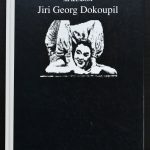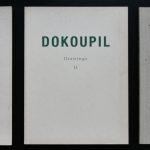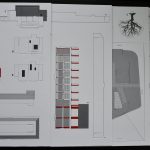
Jaime Permuth is a Guatemalan photographer living and working in New York City.
In 2018, twenty-four works from his series The Street Becomes were exhibited at the Museo Nacional de Arte Moderno, Guatemala City.
Also in 2018, The Street Becomes was a Finalist for the following dummy book competitions: Getxo Photo Open Call (Getxo, Spain), Fiebre Photobook Festival (Madrid, Spain) and FELIFA (Buenos Aires, Argentina).
In 2017, his series YONKEROS received solo exhibitions at the New England School of Photography and at the Center for Photography Woodstock. Also in 2017, twelve works from his series The Street Becomes were included in the exhibition “nasty women / bad hombres” at El Museo del Barrio.
In 2015 and again in 2016 he was a Winner of AI AP’s Latin American Fotografia Competition.
In 2014, he was awarded a Smithsonian Institution Artist Fellowship and was also nominated for a 2015 USA Artists Fellowship.
In 2013, his first monograph Yonkeros was published by La Fabrica Editorial (Madrid). Also, in 2013 he was nominated for the Prix Pictet and awarded an NFA Fellowship from the National Association of Latino Arts and Cultures.
In 2012, he was nominated for the Santa Fe Prize in Photography and was also one of fifteen artists in the United States nominated for the Smithsonian American Art Museum’s Contemporary Artist Award.
His photographs have been shown at several venues in New York City, including The Museum of Modern Art, The Queens Museum of Art, The Bronx Museum of the Arts, The Museum of the City of New York, The Jewish Museum, El Museo del Barrio, and The Brooklyn Museum of Art. He has also exhibited internationally at the Museo Nacional de Arte Moderno in Guatemala, Ryugaheon Gallery (Korea) Casa del Lago in Mexico City, and the Israeli Parliament. Among others, his work is included in the collections of The Museum of Fine Arts Houston, Museo Nacional de Arte Moderno Guatemala, The Brooklyn Museum of Art, The Museum of the City of New York, El Museo del Barrio, Yeshiva University Museum, State University of New York New Paltz, Art Museum of the Americas (DC), Fullerton Art Museum (CA) Museum of Art Ft. Lauderdale (FLA) and Fondazione Benetton.
Jaime Permuth is a Faculty Member at the School of Visual Arts where he teaches in the Master of Professional Studies in Digital Photography program and at New York Film Academy’s Conservatory Program in Photography.
Here is what Permuth says about his YONKEROS series: Book available at www.ftn-books.com
Yonkeros (2010)
“Yonkeros” is a vernacular term for businesses that strip wrecked cars and sell them as scrap metal or for parts. The word is a Spanglish derivative of “junk”, conjugated grammatically to refer to people who engage in this line of work.
Yonkeros is a lyrical exploration of first world consumerism, waste, and obsolescence as they intersect with third world ingenuity and survivalist strategies in the no-man’s-land of Willets Point, Queens.
When I frist arrived in the area in the Spring of 2010 the mechanics were locked in a fierce legal battle with New York City to protect their livelihood. Unfortunately, it was ultimately the City which prevailed; the process of dismantling Willets Point to redevelop it as the newest iteration of New York’s Next Big Neighborhood has begun.
Nonetheless, the spirit of Willets Point and its mechanics will continue to abide and endure in these photographs. I knew Willets Point as a vast inventory of parts, and like all catalogues it was also a poem.






































































